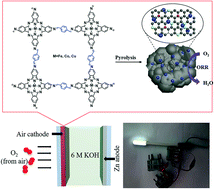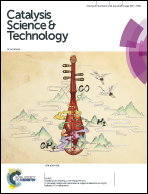In situ anchoring of metal nanoparticles in the N-doped carbon framework derived from conjugated microporous polymers towards an efficient oxygen reduction reaction†
Abstract
An effective strategy is developed to in situ anchor metal nanoparticles into the nitrogen-doped carbon framework (MNCs) by thermal treatment of metallophthalocyanine based conjugated microporous polymers. The metal nanoparticles are uniformly distributed into the porous nitrogen-doped carbon framework and interact with N active sites, thus showing enhanced diffusion kinetics as catalysts for oxygen reduction reaction. Benefiting from the effective strategy and specific structure, the as-obtained MNCs show superior oxygen reduction reaction activity in both alkaline and acid media, and their long-time stability and methanol tolerance are superior to the commercial Pt–C. Moreover, the MNCs also display high performance as cathode catalysts for Zn–air batteries. In view of the novel synthesis process and excellent performance, the proposed strategy could open new avenues for the design of high-performance oxygen reduction reaction catalysts for energy storage and conversion.



 Please wait while we load your content...
Please wait while we load your content...